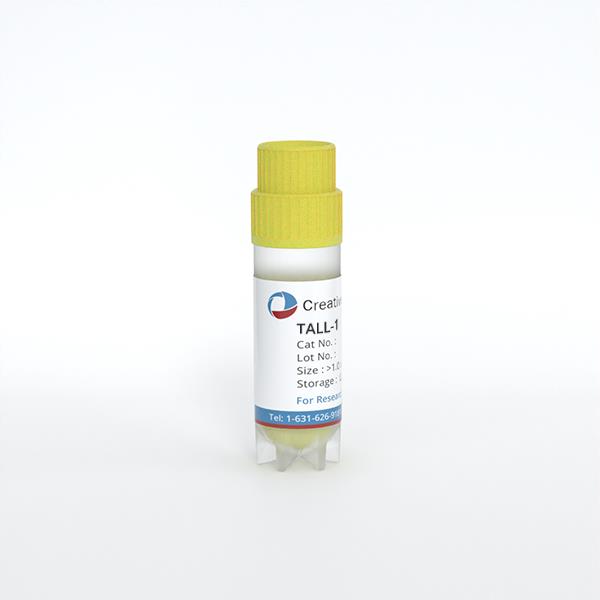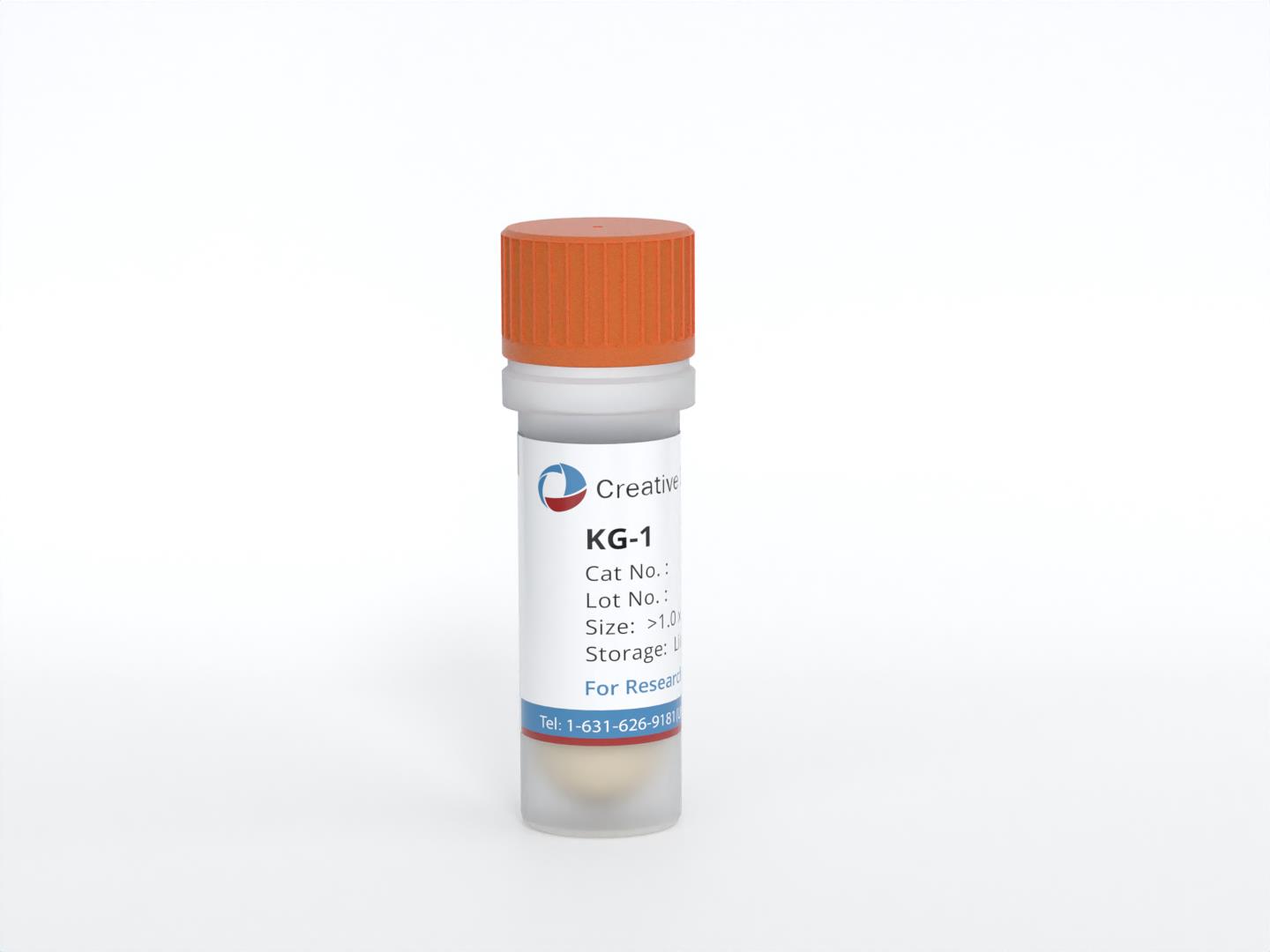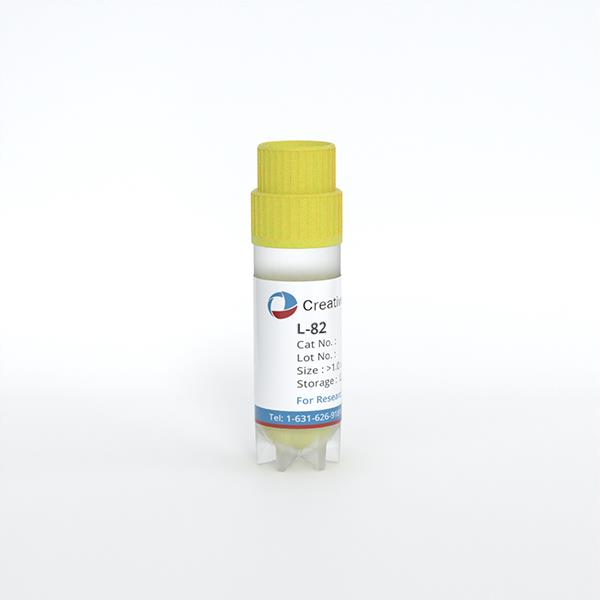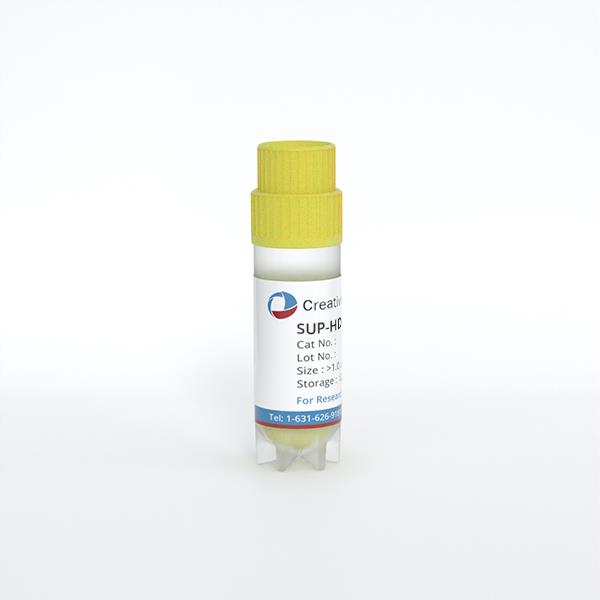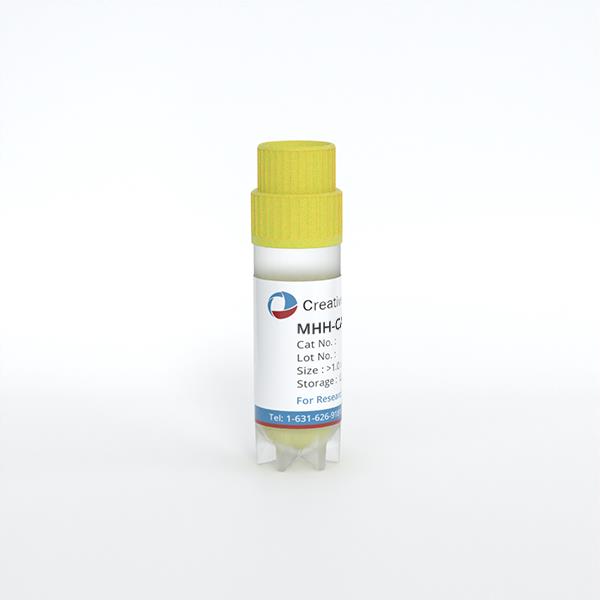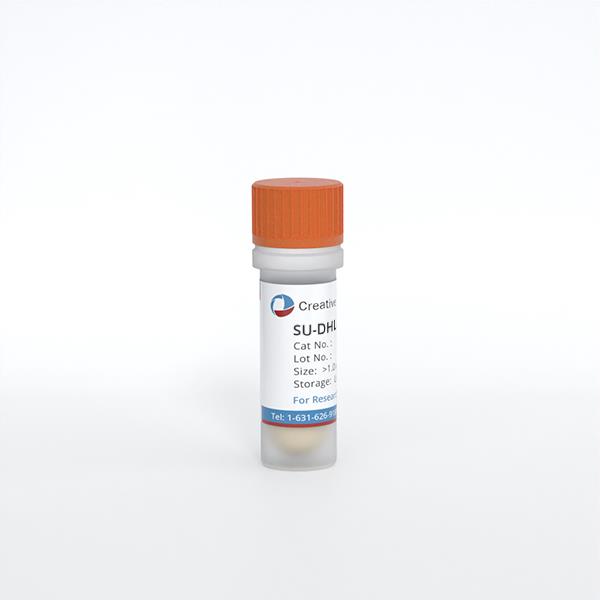
SU-DHL-6
Cat.No.: CSC-C0577
Species: Homo sapiens (Human)
Source: Peritoneal Effusion
Morphology: small single cells and in clusters, in suspension
Culture Properties: suspension
- Specification
- Background
- Scientific Data
- Q & A
- Customer Review
Immunology: CD3 -, CD10 +, CD13 -, CD19 +, CD20 +, CD34 -, CD37 +, CD38 +, CD80 +, CD138 -, HLA-DR +, sm/cyIgG -, sm/cyIgM +, sm/cykappa +, sm/cylambda -
Viruses: PCR: EBV -, HBV -, HCV -, HIV -,
The SU-DHL-6 cell line is a human B-cell lymphoma cell line and is a subtype of diffuse large B-cell lymphoma (DLBCL). SU-DHL-6 cells are round, relatively large cells with good translucency, and they grow in suspension as single cells or cell clusters. The population doubling time of this cell line is ~23.12 hours. It is characterized by features consistent with B-cell origin, displaying high expression of B-cell surface markers such as CD19+, CD20+, and CD38+, as well as immunoglobulin expression (IgM, λ light chains). The cells are pseudodiploid and have 47 chromosomes, and a t(14;18)(q32;q21) translocation involving the rearrangement of the BCL-2 gene and abnormal recombination of the immunoglobulin heavy chain gene locus.
The SU-DHL-6 cell line is used for research of lymphoma, drug screening, hyperthermia, NK cell cytotoxicity, and others. For example, one study has found that EZH2 inhibitors (e.g. Tazemetostat) and BTK inhibitors (e.g. Ibrutinib) showed significant anti-tumor activity in SU-DHL-6 cells.
In Vitro Antitumour Efficacy of an Injectable Formulation of Purinostat Mesylate in SU-DHL-6 Tumour Model
Purinostat Mesylate (PM) has emerged as a powerful new inhibitor of HDAC with antitumor properties according to existing research. However, due to its low water solubility and bioavailability, it hinders its clinical development. In the present work, a PM/HP-β-CD inclusion complex was prepared and characterized. Its antitumor effect was demonstrated via in vitro cytotoxicity and apoptosis assays, in vitro and in vivo pharmacokinetic studies. Flow cytometry was utilized to research the apoptosis process in SU-DHL-6 cells. As demonstrated in Figures 1A-B, when treated with 6 nM LBH589, 3 nM PM, 6 nM PM and PM/HP-β-CD for 48 h, the apoptosis rate was 60.1%, 14.99%, 55.2%, 21.18% and 66%, respectively. PM/HP-β-CD was slightly better than PM in terms of apoptosis induction. As shown in Figure 1C, HP-β-CD alone did not show cytotoxicity within the range of 799.6 nM (mean survival rate: 100.85%), and PM and PM/HP-β-CD had a dose-dependent inhibitory effect on cell proliferation with IC50 values of 1.88 nM and 2.43 nM, respectively.
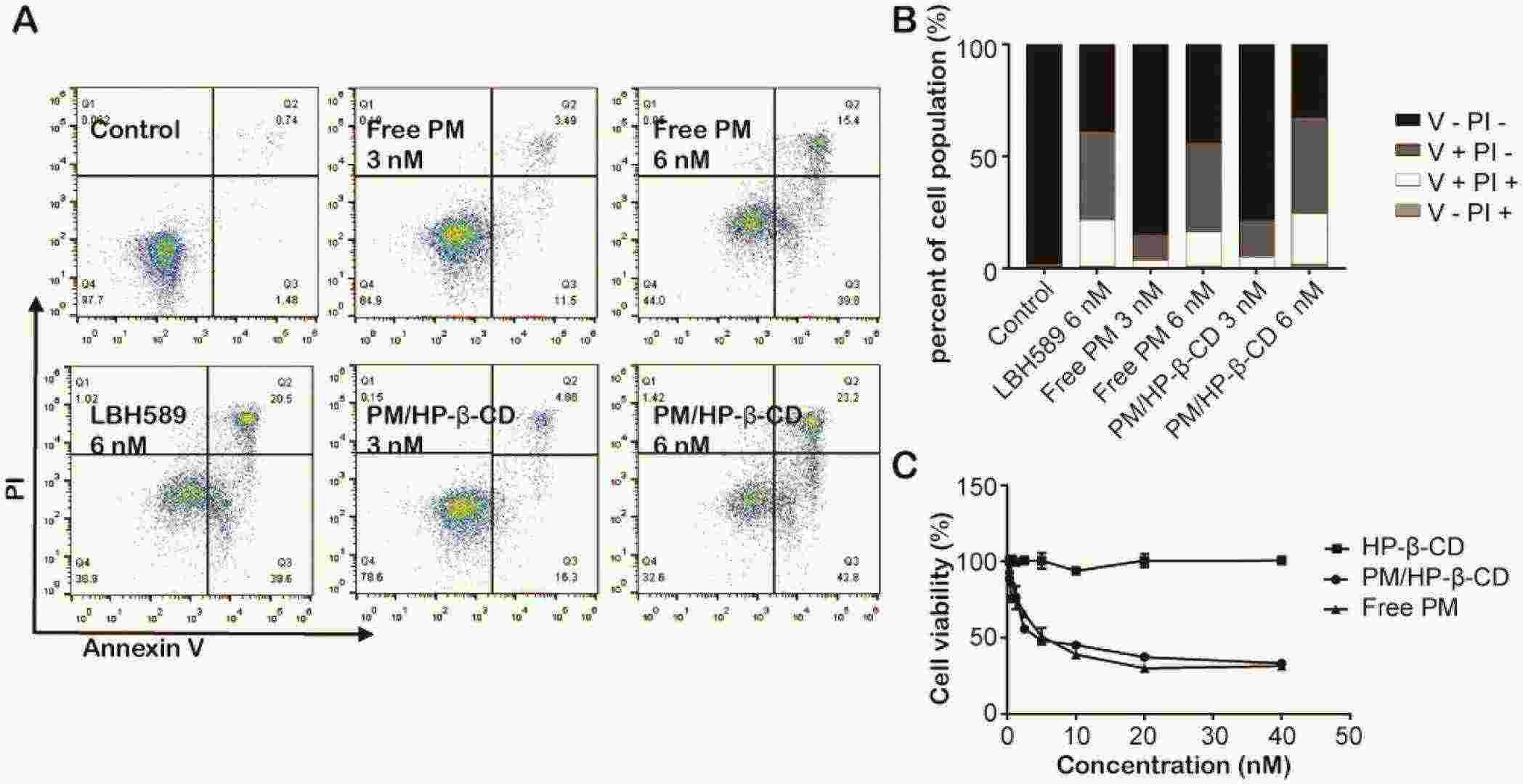 Fig. 1. In vitro antitumour effect of PM/HP-β-CD inclusion complex (Zhu Z J, Wen J L, et al., 2022).
Fig. 1. In vitro antitumour effect of PM/HP-β-CD inclusion complex (Zhu Z J, Wen J L, et al., 2022).
ZY0511 Inhibits the Proliferation of DLBCL Cells
Lysine-specific demethylase 1 (LSD1/KDM1A) is a promising therapeutic target in cancer, but its role in diffuse large B-cell lymphoma (DLBCL) remains unclear. Studies show that KDM1A is overexpressed in DLBCL and correlates with poor patient survival. In this study, Liu's team explored the anti-tumor activity of ZY0511, a novel LSD1 inhibitor, on DLBCL. To evaluate the impact of ZY0511 on DLBCL cells, MTT assay was conducted and found ZY0511 exerted an anti-proliferation effect on SU-DHL-4, SU-DHL-6, SU-DHL-10 and Farage cells in a dose- and time-dependent manner (IC50: 0.33–2.87 μM; Fig. 2c). SU-DHL-4 and SU-DHL-6 cells were the most sensitive to ZY0511, and their IC50 values were decreased from 1.57/1.08 μM (24 h) to 0.46/0.39 μM (96 h). The assay results further confirmed that ZY0511 markedly suppressed DNA synthesis, reducing the proportion of cells undergoing active replication from 61.61 to 10.25% in SU-DHL-4, 47.00 to 9.30% in SU-DHL-6, and 52.76 to 12.23% in Farage cells (Fig. 2d). These data showed ZY0511 inhibited cell proliferation in a concentration-dependent manner.
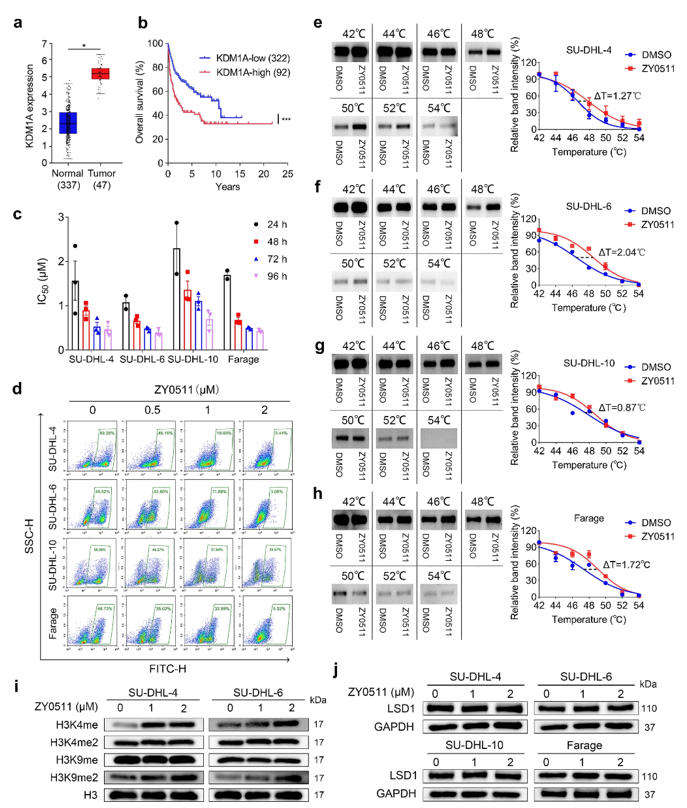 Fig. 2. ZY0511 inhibits DLBCL cells proliferation and interacts with LSD1 in DLBCL Cells (Liu H, Wei J, et al., 2021).
Fig. 2. ZY0511 inhibits DLBCL cells proliferation and interacts with LSD1 in DLBCL Cells (Liu H, Wei J, et al., 2021).
Ask a Question
Write your own review
- You May Also Need
- Adipose Tissue-Derived Stem Cells
- Human Neurons
- Mouse Probe
- Whole Chromosome Painting Probes
- Hepatic Cells
- Renal Cells
- In Vitro ADME Kits
- Tissue Microarray
- Tissue Blocks
- Tissue Sections
- FFPE Cell Pellet
- Probe
- Centromere Probes
- Telomere Probes
- Satellite Enumeration Probes
- Subtelomere Specific Probes
- Bacterial Probes
- ISH/FISH Probes
- Exosome Isolation Kit
- Human Adult Stem Cells
- Mouse Stem Cells
- iPSCs
- Mouse Embryonic Stem Cells
- iPSC Differentiation Kits
- Mesenchymal Stem Cells
- Immortalized Human Cells
- Immortalized Murine Cells
- Cell Immortalization Kit
- Adipose Cells
- Cardiac Cells
- Dermal Cells
- Epidermal Cells
- Peripheral Blood Mononuclear Cells
- Umbilical Cord Cells
- Monkey Primary Cells
- Mouse Primary Cells
- Breast Tumor Cells
- Colorectal Tumor Cells
- Esophageal Tumor Cells
- Lung Tumor Cells
- Leukemia/Lymphoma/Myeloma Cells
- Ovarian Tumor Cells
- Pancreatic Tumor Cells
- Mouse Tumor Cells

